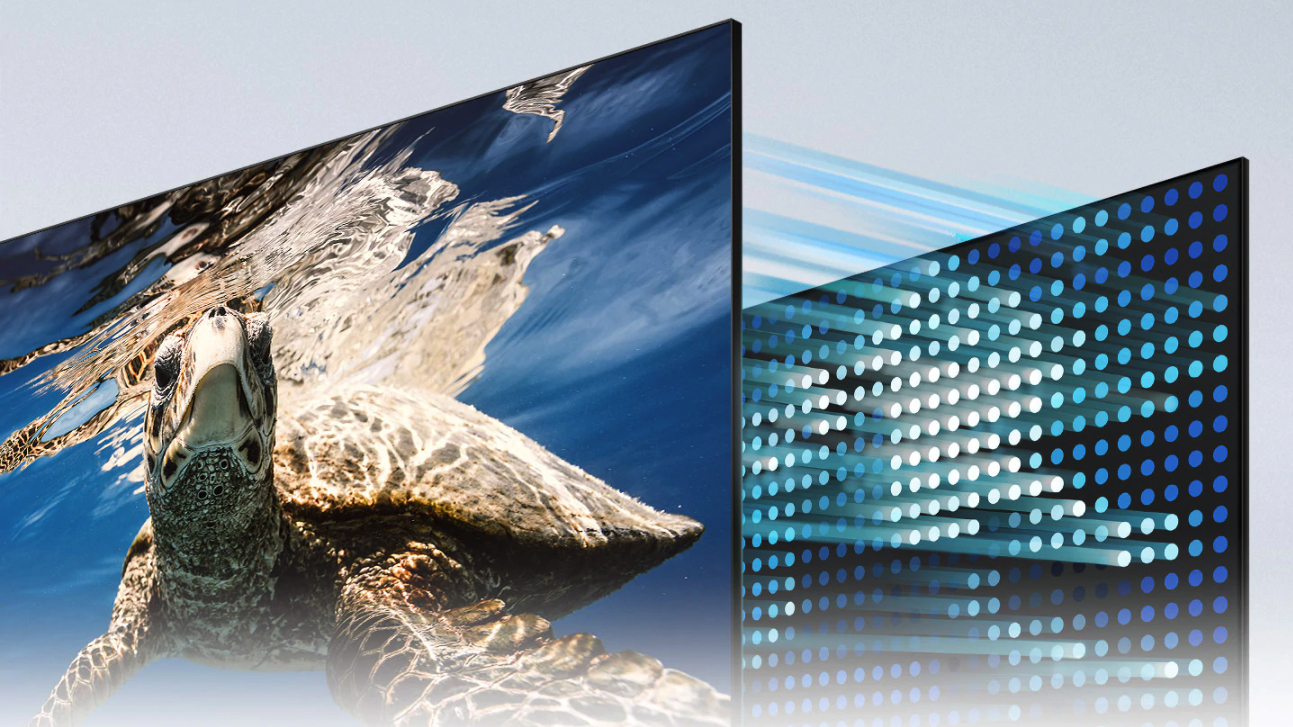Cheaper QLED TVs might be on the way: Samsung is developing a less expensive quantum dot layer
One of the most expensive bits of a QLED display is getting a whole lot cheaper

- New QLED panels wouldn't need expensive barrier film layers
- Samsung doesn't yet know when the tech will be commercialized
- It's only for QLED; QD-OLEDs are made differently
One of the most expensive parts of a QLED display panel is about to get a whole lot cheaper, and that should mean even more affordable QLED televisions.
The component in question is the quantum dot sheet, which sits on top of the LCD panel to improve color reproduction – it's the actual quantum dot part of QLED TVs.
A QLED display currently has barrier film on either side of it to protect the quantum dot layer from oxygen and water. According to trade site The Elec, those films account for 40% of the cost of quantum dot sheets – and Samsung and its supplier Hansol Chemical have found a way to get rid of them.
What Samsung's tech means for QLED – and why it won't help QD-OLED TV
At the moment, a quantum dot sheet has five layers. With the new design there are three.
Samsung and Hansol's new quantum dot sheet design does away with the barrier films altogether without exposing the quantum dots to potential problems.
That should mean a huge drop in the price of QLED panels, but not immediately: Samsung doesn't yet know when the technology will be commercialized.
And even then, it doesn't necessarily mean that QLED TVs will definitely become cheaper – the savings might just be used to absorb rising costs and keep the TVs the same price, or the money from the saving might be invested in other areas of the TV, such as improving the backlight or speaker system.
Sign up for breaking news, reviews, opinion, top tech deals, and more.
As The Elec points out, while the new design is good news for QLED TVs, it's not going to make any difference to QD-OLED displays.
That's because QD-OLED panels use a different design. Whereas QLED panels put a quantum dot layer atop an LCD light source, QD-OLED TVs use a blue OLED light source with two red and green conversion layers added via inkjet printing rather than in their own separately manufactured layer.
That's a bit of a shame, because QLED TVs are already getting pretty low-priced, but QD-OLED TVs such as the Samsung S95F or Sony Bravia 8 II very much are not.
You might also like

Contributor
Writer, broadcaster, musician and kitchen gadget obsessive Carrie Marshall has been writing about tech since 1998, contributing sage advice and odd opinions to all kinds of magazines and websites as well as writing more than twenty books. Her latest, a love letter to music titled Small Town Joy, is on sale now. She is the singer in spectacularly obscure Glaswegian rock band Unquiet Mind.
You must confirm your public display name before commenting
Please logout and then login again, you will then be prompted to enter your display name.